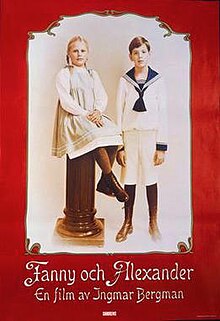In a world that is having an increasingly difficult time sitting still for an extended amount of time, any movie longer than 90 minutes can be a struggle to watch. Especially with the ubiquitous nature of smartphones shortening our attention spans, many of us won’t even bother watching a video that’s longer than seven seconds. Part of the solution many movies have resorted to in recent years has been to split films into two parts, so they are easier to watch, instead of sitting through a four-hour film. Other solutions have been to keep the pace of the plot set so fast as to keep the audience enthralled all the way to the end credits. This latter option often includes plenty of flashy and disorienting action to sustain the excitement level at a point where viewers won’t glance at their watches. This week’s two films have lengthy running times but are worth the watch if you can pay attention long enough.
Jeanne Dielman, 23 Quai du Commerce, 1080 Bruxelles
Year: 1975
Rating: Not Rated
Length: 201 minutes / 3.35 hours
Movies with running times above three hours have been around since nearly the beginning of cinema itself. Many of these films were merely adapting to the tenets of the theatre. With its plays and musicals, many theatre productions included overtures and intermissions. These plays and musicals were quite long, easily spanning several hours. This is why many long films also followed suit by including overtures and intermissions for audiences to get up and stretch. While the latest notable film to have an intermission was made in 2001 (Pearl Harbor), quite a few films from the 1960s and 1970s had intermissions, even if they were cut out in home media. That being said, Jeanne Dielman, 23 Quai du Commerce, 1080 Bruxelles (1975) does not have an intermission, or fast-paced plot, or any exciting action. It merely has the life of a homemaker, revealed in near real-time.
Life as a single mother can be a regular series of events, repeated ad nauseam. For each of the three hours of this film’s running time, we get a glimpse into three days of Jeanne Dielman’s (Delphine Seyrig) life. There is cleaning to do, dinner to cook, and a bedroom “job” to perform to keep her and her son living comfortably. However, when the small details start to go awry, we see Jeanne slowly succumb to the stress she hides right beneath her stoic surface. Whether it’s the countless hours spent alone in the house or the exceptional standards of homemaking that she holds herself to, the subsequent days definitely show she is almost at her breaking point. Finally, on the third day, Jeanne has a sudden release with one of her “clients.” Perhaps, as a result, she cuts her session short in a sudden outburst of violence.
The Lord of the Rings: Return of the King
Year: 2003
Rating: PG-13
Length: 201 minutes / 3.35 hours
If there’s one thing the Academy Awards like, it’s a long movie. Often, the nominees for Best Picture are regularly over two-and-a-half hours long, and will sometimes even break the three-hour mark. Additionally, some films of a particular series might have different release dates but are considered as one, complete film when placed back-to-back. In these cases, franchises like Star Wars, Harry Potter, and The Lord of the Rings could all be considered singular films with running times at or over 12 hours long! In regards to the last series of the aforementioned list, which won Best Picture in 2003, the fact that it was shot all at once with the same actors gives credence to the thought that all three films are actually a single film split into three parts. With the “extended editions” of these films considered to be the true film adaptation of the Lord of the Rings story, get ready for a half-day movie marathon.
The third installment in the Lord of the Rings trilogy, The Return of the King (2003) follows Frodo (Elijah Wood) and Sam (Sean Astin) as they complete the final push into Mordor to destroy Sauron’s ring of power. Meanwhile, the remaining members of the Fellowship (established in the first film, The Fellowship of the Ring (2001)) bolster their forces to take on Sauron’s army. Aragorn (Viggo Mortensen) gains alliances of kings, both living and dead, and battles his way to Sauron’s front door. Having traveled an incredible distance and endured numerous obstacles and struggles, Frodo and Sam wearily make their way into Mount Doom, the source of (and therefore the only way to destroy) the ring of power. As the battle heats up between good and evil, Gollum (Andy Serkis) sees his last chance to obtain the ring for himself. Will Sauron win in the end, or will Frodo be able to rid Middle Earth of the ring once and for all?
2 sum it up: 2 films, 2 movie marathons


